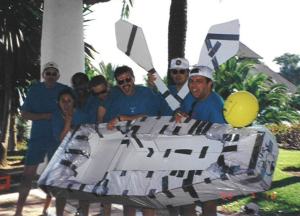 Ok, this is a little bit of a teaser…we are in the process of doing a major overhaul of how we look at the 4-Drive Model. We’ve talked about the need to update this model before (see here and here). We are underway in getting that developed and should be launching it the first quarter of 2011.
Ok, this is a little bit of a teaser…we are in the process of doing a major overhaul of how we look at the 4-Drive Model. We’ve talked about the need to update this model before (see here and here). We are underway in getting that developed and should be launching it the first quarter of 2011.
Here is a sneak peak…the four main motivations as we’ve defined them are now renamed and constitute different elements:
1. Personal Motivation- focus on the intrinsic motivators that we have and encompasses the Drive to Challenge & Comprehend
2. Reward Motivation- focus is on the extrinsic motivators that we have and encompasses the Drive to Acquire & Achieve
3. Social Motivation- focus is on the social drives that motivate us and includes the Drive to Bond & Belong
4. Passion Motivation (this name is still being hotly debated – but for now its what we are running with)… – focus is on the motivational element of purpose and passion – including defending one’s honor and tribe





